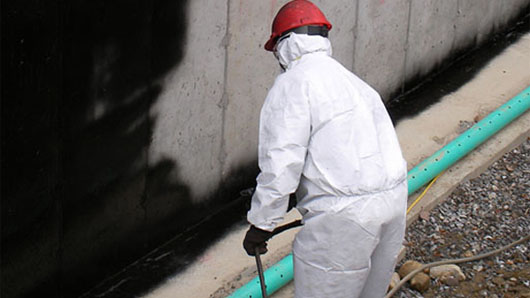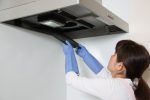Moisture is one of the toughest enemies of masonry. Regardless if it is in the form of snow or wind-driven rain, moist can get on masonry walls even through the smallest cracks and gaps or failed mortar joints.
When moist worms its way behind masonry walls, it could cause a number of problems that could make the assembly to prematurely deteriorate. These problems include freeze-thaw fractures, development of cracks and gaps, efflorescence and stains, damage to insulation, material swelling, metal corrosion, mould and mildew growth as well as bad odour.

Combatting Moisture with Air Barrier
Fortunately, the battle against moisture can be avoided with the use of an air barrier system. This is a material typically added on the outward-facing side of the masonry wall and works by keeping water off the structure. Apart from keeping moisture at bay, air barriers are also used to make masonry assembly as air tight and energy efficient as possible.
Options for Air Barrier System
Air barriers used on masonry walls can come in a number of types, and the choice will depend on the design of the wall where it will be installed, the geographic location as well as the intended purpose that the barrier will serve.
Basically, there are two common types of air barrier systems widely utilized by professionals: sheet membranes and fluid-applied. Sheet membranes were particularly popular in the past because of their factory-controlled thickness and quality. As their name suggests, they come in continuous sheets and are rolled out onto the wall. Fluid-applied products, on the other hand, are becoming increasingly popular these days because of their ease of application. They are most suitable for CMU backup wall systems.
Air Barrier Requirements
In order for an air barrier system to become effective it needs four important things, otherwise it will be rendered useless and can even contribute to the moisture problem later on. First, it should be continuous and seamless so as to provide the necessary air tightness that will prevent conditioned air from escaping. Second, it should be durable so that it will stay in place until the masonry units are installed and can resist weathering during its lifetime. Third, the material should be permeable so as not to trap water vapour and will allow the wall assembly to “breathe.” Finally, it should be structural so that it will adhere well on the wall sheathing and will not get easily detached even under air pressure differentials.
Air Barrier System Installation
The installation of an air barrier system is straightforward, as it can either be rolled or sprayed onto the wall. As such, it can be added while the masonry wall is being built. However, it should be noted that their placement will depend on the type of wall they would be attached to and the climate in the area. For instance, in veneer and single wythe walls that are set in cold climates, the air barrier may be installed near the interior face of the wall where it could double as a vapour retarder. Then, the insulation is placed between the studs.
It is highly recommended that air barriers are installed by professional masons to ensure proper application. If an air barrier is incorrectly installed on the masonry assembly, it could lead to moisture and mould problems that could be difficult and expensive to address.
Jessie Moore is a seasoned writer who is particularly interested writing insightful articles about home improvement and masonry installation, repair and maintenance. She also pens content for McIntyre Masonry, a professional stonemasons company.























